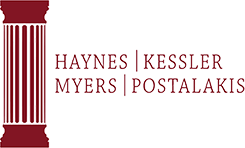What does this decision practically mean for employers?
1) Employers should continue to set clear rules about acceptable workplace conduct and demonstrate adherence to those rules. Even before Bostock, all employees shared common goals: Show up to work on time, work to the best of their ability and to achieve the employer’s goals, receive compensation and benefits, and, if desired, an opportunity for advancement. Though some employers tend to care too much about an employee’s off-work activity, the public (and particularly social media) often contributes to making off-work activity a concern for an employer it may not have otherwise. Anti-fraternization policies may be troublesome to enforce, but an employer’s expectations about the use of time and keeping to oneself while conducting business on company time are not.
2) HR and Management need to continue fulfilling their roles in training and disciplining all employees. After Bostock, gay or transgender employees are afforded protection from unequal disciplinary, pay, and promotion practices. Employers should expect to face scrutiny of terminations or discipline meted out (whether singularly or disproportionately) against gay or transgender employees, just as they may expect it when addressing similar issues involving older or minority workers. While employee handbooks and a jurisdiction’s “at will” employment jurisprudence may make it seem easy to fire anybody for any/bad/no reason, the decision-making process in firing, pay, promotion, and discipline has always been capable of becoming a mine field created by ineffectual or biased managers who are either afraid to discipline or who personally benefit from a failure to discipline all employees for substantially-similar conduct. If an employer suspects deficiencies may be present in its management, it can re-train staff and employees, audit its HR practices, and/or involve counsel to investigate. Again, good company policies – appropriately and consistently enforced and updated – help to steer away from a dire need to undertake drastic and expensive maneuvers to simply comply with the law.
3) An employee’s sexual identity or orientation can play no role in employment decisions. The Court’s ruling in Bostock reasons that employers are prohibited from intentional discrimination, and that prohibition necessarily occurs when the outcome of an employment decision takes an employee’s orientation or identity into consideration. Good and careful managers/employers are already doing this.
4) For at least the last 5 years, workplace retaliation claims have risen, now comprising close to half of all EEOC filings. Because some managers or employers may believe they can skirt the law by shooting the messenger, it should be no surprise that managers and employers may attempt to sidestep the simple rulings in Bostock by incentivizing employees to become “snitches” to report minor offenses or bogus complaints. Similarly, employers need strong HR support to avoid a manager kicking off a process that culminates with another manager or supervisor making an otherwise objective determination to fire or discipline an employee for what began as illegal discrimination. Modern day cyber-investigative techniques can help unmask significant details “behind the scenes” of such schemes while prosecuting expensive and time-consuming lawsuits. Most likely, bad endings await.
As for the Bostock decision’s impact on employees’ discrimination claims, the following points are noteworthy:
1) Discrimination on the basis of “sex” is an expansive concept that includes types of discrimination not expressly identified in the 1964 language of Title VII. Over time it was deemed to include pregnancy discrimination, motherhood discrimination, sexual harassment and same sex harassment. These are all forms of discrimination recognized by the Supreme Court. The Court’s ruling in Bostock re-affirmed the expansive understanding of sex discrimination by applying it to sexual orientation and sexual identity, which should also prove favorable in having lower courts acknowledge cases of implicit bias and sexual stereotyping that may not always be appreciated as forms of discrimination.
2) As beliefs, opinions and perceptions are most often formed among a variety of factors, so too is discriminatory conduct seldom based on an isolated characteristic. The Bostock decision clarifies that there may be multiple reasons for an unlawful employment decision, including a mix of legitimate and illegitimate factors, but a plaintiff need only show, for purposes of Title VII, the adverse action taken against them was based “in part” on discriminatory motive. So, a plaintiff doesn’t have to prove that sex discrimination was the sole or even primary reason for the adverse action, but only some part of the reason. This clarification of the causation standard a plaintiff is required to establish benefits not only sex discrimination claims but all types of discrimination claims under Title VII.
3) The Bostock decision also nullifies the defense that an employer may be an equal opportunity offender – in that it treats competing groups equally poorly – and, therefore, does not discriminate against a particular class of employees. The Court ruled that a claim of discrimination should be assessed on an individual level and not in terms of how the employer may treat groups of people.
For questions and representation surrounding employer discipline, hiring and firing practices, call attorneys Eric Hershberger and Fazeel S. Khan at Haynes Kessler Myers & Postalakis. (614) 892-9909

